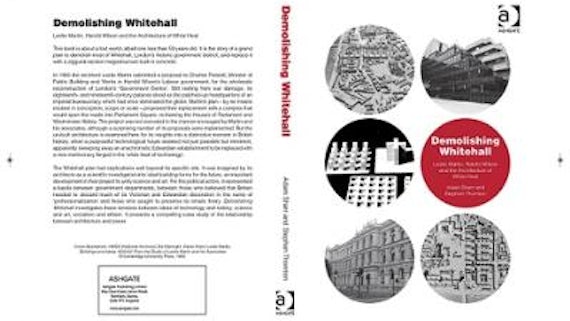Architect's grand plan to wipe out Whitehall
17 Hydref 2013

London's Parliament Square could have been a quiet, leafy and traffic-free place if a radical architect's plans had been given the go-ahead.
Sir Leslie Martin's idea to demolish the Foreign Office building and radically change the setting of Westminster Abbey and the Houses of Parliament is the subject of a new book by political historian Dr Stephen Thornton, of the School of European Languages, Translation and Politics and Professor Adam Sharr, of Newcastle University.
Demolishing Whitehall: Leslie Martin, Harold Wilson and the Architecture of White Heat, examines the impetus behind these plans, which included a tunnel in the river alongside the Houses of Parliament and halls of residence for MPs.
The plans would have rebuilt the whole area from Downing Street to Parliament Square, and St James' Park to the Thames. It would have also reframed Parliament Square and cut a grand axis through two miles of Central London to connect up Whitehall with the British Museum.
Though associated with Labour leader Harold Wilson, surprisingly the plan's most stalwart supporter was actually Conservative foreign secretary and, briefly, Prime Minister, Sir Alec Douglas-Home - "not many people's vision of a moderniser", according to Dr Thornton.
One of the outcomes of Martin's plan would have been a less hierarchical and more democratic space, with the public using the government buildings as routes through the city.
Inspired by Edward Lutyens' Viceroy's House in New Delhi, the sides of the new Whitehall blocks were to be tiered back at each storey to form a series of concrete terraces with leafy courtyards in-between.
The riverside tunnel proposed as part of the plans would have linked Embankment with Victoria Street, removing passing traffic from Parliament Square by narrowing the Thames and appropriating one arch under Westminster Bridge. A grid of underground service roads and car parks beneath the new buildings would have given politicians and civil servants fast and easy access to London's road network.
"This plan, which seems wholly implausible now, has to be put into the context of the time," said Professor Sharr. "In many ways it's quite appealing – a pedestrianized Whitehall and Parliament Square to replace one that was choked with traffic even then - with grand public arcades and riverside cafes. I actually like the ambitions of the project but it's just a shame it had to be at the expense of what was already there."
Dr Thornton added: "After Charles Pannell, the Minister for Public Building and Works left office there were no 'policy entrepreneurs' backing Martin's plan from the Labour benches, and enough people managed to obstruct it for long enough for the idea to become unfeasible. It failed to progress largely due to the currency crisis, but also because of a shift in the public mood and a loss of faith in experts and the vision of a 'grand technological future'."